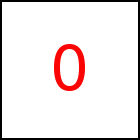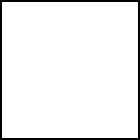Basic Shapes - taccGL™ Tutorial
This section shows how to draw some basic shapes.
Rectangles
The following examples draw rectangular boxes of given color,
position, and size. The first example gives the position of the box
using position(100,1000,0) whereby the three numbers give
absolute coordinates (so you might need to scroll to find the rectangle)
in pixels measured from the top left point of
the document. Since this example is working in 2D, the third
coordinate, the z-coordinate is 0. In the second example the
position is given relatively to an HTML element with id=exd1
using {rx:0.5, ry:0.5}. The given values are
multiplied by the elements width and height, so that this
example positions the rectangle in the middle of the HTML element.
The third example uses {ox:75, oy:60}. The values
give an offset to the position of the HTML element measured
in pixels.
The specification of color and size are straight forward, all
numbers given to resize are measured in pixels. Finally note that
we use the method a instead of actor (as it was
used in the first example). a instead of actor
are similar methods taking similar parameters. The difference is
that actor automatically takes care about the texture,
which is something we explain later on in section Integration of HTML and WebGL
and which is needed when drawing HTML elemnents but not
needed to draw colors.
taccgl.a('exd1') . position(100,1000,0). color("green") . resize(200,500). duration(5). start(); | RUN |
taccgl.a('exd1') . position({rx:0.5, ry:0.5}). color("red") . resize(20,50). duration(5). start(); | RUN |
taccgl.a('exd1') . position({ox:75, oy:60}). color("blue") . resize(20,50). duration(5). start(); | RUN |
Images, Text, 2D Drawings, Frames ... - via HTML Elements
taccgl™ can draw HTML elements. It does not have an explicit
interface to draw basic shapes like Images, Text, Frames etc.
Instead the idea is to define such items as HTML elements formatting them using well known HTML and CSS and
then use taccgl™ functions to animate those HTML elements with the power and performance of WebGL™ possibly
as integrated part of a 3D scene.
The following example draws an image using taccgl™. It is defined as HTML-img tag and gets an id="exh10i".
Then taccgl.actor('exh10i') selects that element, and ({rx:0.5}) moves it to
the right in the middle of the original HTML element.
<img id="exh10i" src="/pic/taccglLogo-o.png" border="0" width="162px" height="73px"> | |
taccgl.actor('exh10i') . position ({rx:0.5}). duration(5). start(); | RUN |
Often you will use CSS visibility:hidden
(not display:none) for such HTML elements, to show them
only as part of the 3D animation. Within most of the examples
we don't for better illustration.
taccgl™ and WebGL™ need to allocate texture space for drawing HTML elements.
Because that is limited the examples above work only if the drawn element is within
the top 1424 and left 1200 pixels of the HTML document. Also drawn elements must not
overlap. See Integration of HTML and WebGL and HTML Elements on Canvas for details.
Parallelogram
To draw a parallelogram, you can specify height and width in vector form. In the first
example below the height is specified as a vector hV(50,100,0) (height-vector). This specifies length and
direction of the left and right edges of the parallelogram. Length and direction
of the upper and lower edge are given using wV(100,0,0) (width-vector). All numbers specify
length in pixels.
taccgl.a('exd2') . color("red") .hV (50, 100, 0) .wV(100,0,0). duration(5). start(); | RUN |
taccgl.a('exd2') . color("blue") .hV (0, 100, 0) .wV(100,100,0). duration(5). start(); | RUN |
Triangle
To draw a triangle specify taccgl.triangle as second parameter of a.
This will by default draw the upper left triangle of the underlying HTML element.
Using hV, e.g. hV(50,100,0) (height-vector) and wV, e.g.
wV(100,0,0) (width-vector) the coordinates of the 2nd and 3rd point of the triangle
can be specified. All numbers specify length in pixels, relative to the first point of the
triangle.
taccgl.a('exd25',taccgl.triangle) . color("red") . duration(5). start(); | RUN |
taccgl.a('exd25',taccgl.triangle) . color("blue") .hV (0, 100, 0) .wV(100,100,0). duration(5). start(); | RUN |
Circle
The following example shows how to draw a circle in taccgl™. In fact as circle is an instance of
a flexible object, so this is why the a-method has a second parameter
selecting a taccgl.flexiBorder and then later on Circle () is selected.
It is also possible to draw an ellipse by resizing the circle accordingly.
taccgl.a('exd3',taccgl.flexiBorder) . Circle () . color("green"). duration(5). start(); | RUN |
taccgl.a('exd3',taccgl.flexiBorder) . Circle () . color("green"). resize(80,170). duration(5). start(); | RUN |
taccgl.a('exd3',taccgl.flexiBorder) . Circle () . color("green"). hV (0, 100, 0) .wV(100,100,0). duration(5). start(); | RUN |
Because the GPU cannot draw a circle itself (in fact the GPU just does triangles), the circle is approximated
as a couple of rectangles. Using nparts you can specify how many:
taccgl.a('exd3',taccgl.flexiBorder) . Circle () . color("green"). nparts(2). duration(5). start(); | RUN |
taccgl.a('exd3',taccgl.flexiBorder) . Circle () . color("green"). nparts(10). duration(5). start(); | RUN |
taccgl.a('exd3',taccgl.flexiBorder) . Circle () . color("green"). nparts(50). duration(5). start(); | RUN |
Box
Using taccgl.dddBox a box can be created.
Here you need to specify a color for each of the surfaces.
Using selLeft, selTop ... a surface of the box can be selected
and then using color a color is chosen.
Per default a box has the same width and height as the underlying HTML element.
The depth defaults to the height of the HTML element.
You can set width and height using resize and depth
using depth.
hV and wV can be used as described above and in addition there
is dV to specify the length and direction of the depth of the box in vector form.
taccgl.a("exd4",taccgl.dddBox) .selLeft().color("green").selRight().color("brown") .selTop().color("red") .selBottom().color("yellow").selBack().color("white") .selFront().color("blue") .rotateMiddle(1,1,-1) .dur(5).start() | RUN |
taccgl.a("exd4",taccgl.dddBox) .selLeft().color("green").selRight().color("brown") .selTop().color("red") .selBottom().color("yellow").selBack().color("white") .selFront().color("blue") .depth(10).rotateMiddle(1,1,-1) .dur(5).start() | RUN |
taccgl.a("exd4",taccgl.dddBox) .selLeft().color("green").selRight().color("brown") .selTop().color("red") .selBottom().color("yellow").selBack().color("white") .selFront().color("blue") .hV(50,170,0) .rotateMiddle(1,1,-1) .dur(5).start() | RUN |
taccgl.a("exd4",taccgl.dddBox) .selLeft().color("green").selRight().color("brown") .selTop().color("red") .selBottom().color("yellow").selBack().color("white") .selFront().color("blue") .dV(0,-200,-100) .rotateMiddle(1,1,-1) .dur(5).start() | RUN |
Cylinder
A cylinder is created, just as a circle that was describe above, as a flexible object.
It uses the flip method, that creates a kind of page flip effect by rolling up the
underlying element. The following 2 examples create cylinders, the then following examples
roll up partially and so create partial cylinders.
taccgl.a("exd5",taccgl.flexiBorder) .color("#00c000"). nparts(50) .Flip(0,0,6*Math.PI/4,6*Math.PI/4) .rotateMiddle(1,0,0) .dur(5).start() | RUN |
taccgl.a("exd5",taccgl.flexiBorder) .color("#00c000"). nparts(50) .Flip(0,0,6*Math.PI/4,6*Math.PI/4) .wV(570,0,0).hV(0,0,-170).dV(0,570,0). rotateMiddle(1,0,0) .dur(5).start() | RUN |
taccgl.a("exd5",taccgl.flexiBorder) .color("#00c000"). nparts(50) .Flip(0,0,2*Math.PI/4,2*Math.PI/4) .rotateMiddle(1,0,0) .dur(5).start() | RUN |
taccgl.a("exd5",taccgl.flexiBorder) .color("#00c000"). nparts(50) .Flip(0,0,1*Math.PI/4,2*Math.PI/4) .rotateMiddle(1,0,0) .dur(5).start() | RUN |
taccgl.a("exd5",taccgl.flexiBorder) .color("#00c000"). nparts(50) .Flip(.5,0,0,0) .rotateMiddle(1,0,0) .dur(5).start() | RUN |
WebGL™ is a trademark of the Khronos Group Inc.
|





